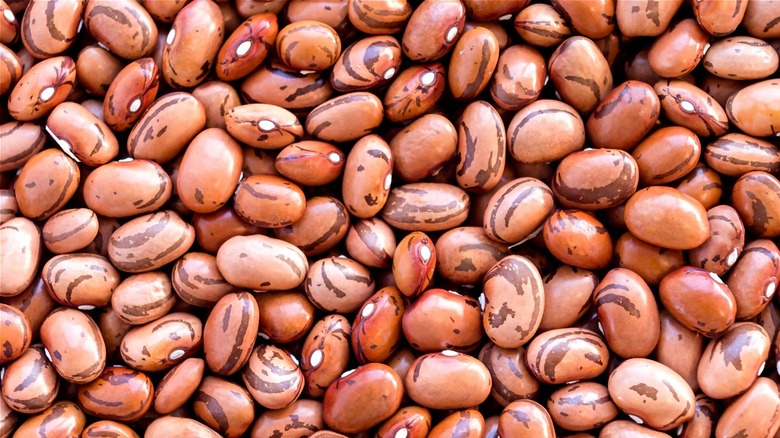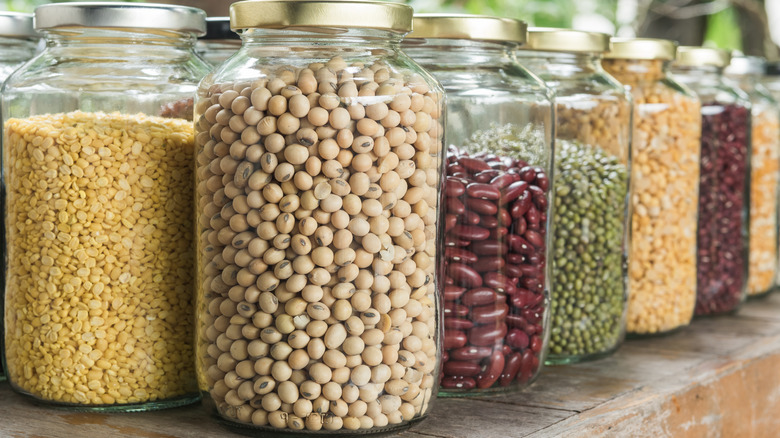Dried Beans Are The Hero Food Inflation Needs Right Now
The number one food story of 2022 could easily have been centered on one word — inflation. And for good reason: Per the U.S. Bureau of Labor Statistics, from May 2021 to May 2022, the price of "food at home" — which includes groceries — increased by a staggering 11.9%. This marked the biggest increase during a 12-month period for this category since 1979.
The USDA, which tracks consumer prices, has predicted that inflation will slow in 2023, but it's not going to reverse itself. This means that some of the higher prices in grocery stores might be there to stay. When coupled with news of the COVID-era boost in SNAP benefits coming to an end on March 1st, 2023, many Americans may find the need to get creative in stretching their grocery budgets.
There are tons of tips all over the internet and social media for how to save while shopping for food. For instance, did you know shopping on Wednesdays yields the most savings at grocery stores? With just a little bit of planning, you can avoid common mistakes other people make at the grocery store. Another tip involves revisiting the early days of the COVID-19 pandemic. No, you don't need to start making a sourdough starter again. Consider stocking up on a pantry staple that has been nourishing people for thousands of years.
Stock up on dried beans
Put simply, dried beans are the hero food inflation needs right now, and it's time to stock up. While prices for dried beans increased alongside other grocery items, they didn't increase as much as items like beef and dairy. Dried beans are also generally cheaper than canned, ready-to-eat beans. For example, Kroger advertises a 15.5-ounce can of Goya black beans for $1.71. A 1-pound bag of dried black beans from Goya is $2.31. However, when you cook 1 pound of black beans, you get 6 cups of cooked beans. You'd need to use almost four cans to achieve the same volume, which costs approximately $7.
Dried beans are not only cheaper, but they're also a fantastic protein replacement for meat. Beef has more protein than beans, but the margins aren't huge. When you compare kidney beans and beef, beef has 22g of protein in a 3 oz serving, but kidney beans yield 15.4g of protein in 1 cup. They're also similar in calories: A 177g serving of kidney beans has only 225 calories, whereas 85g of ground beef has 213 calories.
If you're nervous about preparing dried beans, check out our guide on types of beans and how to cook them. With so many delicious ways to prepare this humble ingredient, like our garlic and herb great northern beans recipe, both your stomach and your wallet will be glad you decided to combat food inflation by stocking up on dried beans.

